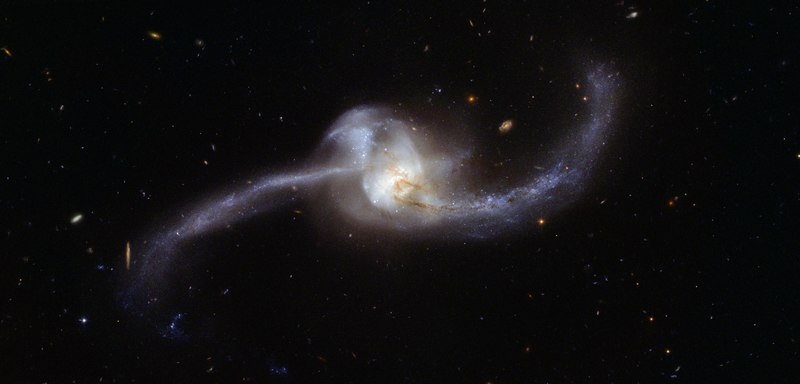Ficheiro:NGC 2623 or Arp 243 - HST Potw1742a.tif

Dimensões desta antevisão em JPG do ficheiro TIF: 800 × 384 píxeis Outras resoluções: 320 × 154 píxeis | 640 × 307 píxeis | 1 024 × 492 píxeis | 1 280 × 615 píxeis | 3 978 × 1 910 píxeis.
Imagem numa resolução maior (3 978 × 1 910 píxeis, tamanho: 17,72 MB, tipo MIME: image/tiff)
Histórico do ficheiro
Clique uma data e hora para ver o ficheiro tal como ele se encontrava nessa altura.
| Data e hora | Miniatura | Dimensões | Utilizador | Comentário | |
|---|---|---|---|---|---|
| atual | 05h00min de 16 de outubro de 2017 |  | 3 978 × 1 910 (17,72 MB) | Fabian RRRR | =={{int:filedesc}}== {{Information |description={{en|1='''A glimpse of the future This image, captured by the NASA/ESA Hubble Space Telescope, shows what happens when two galaxies become one. The twisted cosmic knot seen here is NGC 2623 — or Arp 24... |
Utilização local do ficheiro
A seguinte página usa este ficheiro:
Utilização global do ficheiro
As seguintes wikis usam este ficheiro:
- de.wikipedia.org
- en.wikipedia.org
- fr.wikipedia.org
- it.wikipedia.org
- ja.wikipedia.org
- lb.wikipedia.org
- nl.wikipedia.org
- tr.wikipedia.org
- vi.wikipedia.org
- zh.wikipedia.org


